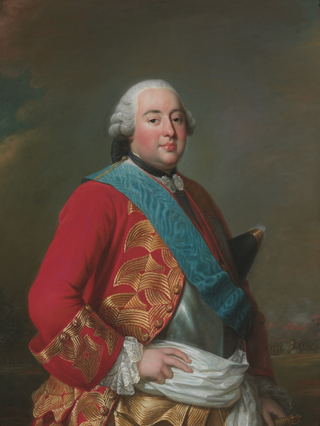
Louis Philippe I, Duke of Orléans, known as le Gros, was a French royal of a cadet branch of the House of Bourbon. The First Prince of the Blood after 1752, he was the most senior male at the French court after the immediate royal family. He was the father of Philippe Égalité. He greatly augmented the already huge wealth of the House of Orléans.
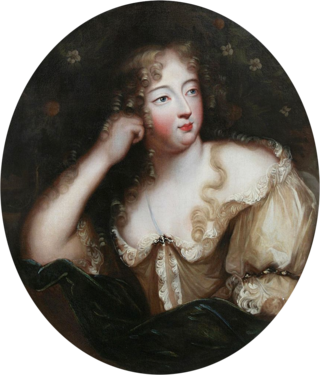
Françoise-Athénaïs de Rochechouart de Mortemart, Marquise of Montespan, commonly known as Madame de Montespan, was a French noblewoman and the most celebrated royal mistress of King Louis XIV. During their romantic relationship, which lasted from the late 1660s to the late 1670s, she was sometimes referred to as the "true Queen of France" due to the pervasiveness of her influence at court.

Anne Louise Bénédicte de Bourbon was the daughter of Henri Jules de Bourbon, Prince of Condé, and Anne Henriette of Bavaria. As a member of the reigning House of Bourbon, she was a princesse du sang. Forced to marry the Duke of Maine, legitimised son of Louis XIV and Madame de Montespan, she revelled in politics and the arts, and held a popular salon at the Hôtel du Maine as well as at the Château de Sceaux.

Louise Angélique Motier de la Fayette was a French courtier and close friend and confidante of King Louis XIII. She later left the court and entered a convent. She was known for her influence upon the monarch both before and after she left the court.

François Mansart was a French architect credited with introducing classicism into the Baroque architecture of France. The Encyclopædia Britannica identifies him as the most accomplished of 17th-century French architects whose works "are renowned for their high degree of refinement, subtlety, and elegance".
Nathalie Roussel is a French actress of stage, television and film. She is best known for her role in the 1991 films My Father's Glory and My Mother's Castle.
Charlotte-Rose de Caumont de La Force, Charlotte-Rose Caumont La Force, or Mademoiselle de La Force (1654–1724) was a French novelist and poet. Her best-known work was her 1698 fairy tale Persinette which was adapted by the Brothers Grimm in 1812 as the story Rapunzel.
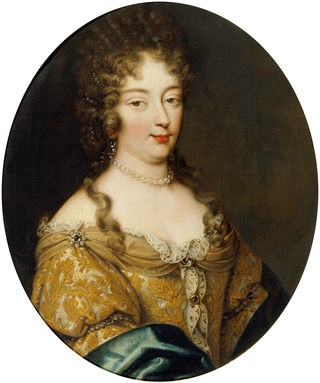
Olympia Mancini, Countess of Soissons was the second-eldest of the five celebrated Mancini sisters, who along with two of their female Martinozzi cousins, were known at the court of King Louis XIV of France as the Mazarinettes because their uncle was Louis XIV's chief minister, Cardinal Mazarin. Olympia was later to become the mother of the famous Austrian general Prince Eugene of Savoy. She also involved herself in various court intrigues including the notorious Affair of the Poisons, which led to her expulsion from France.
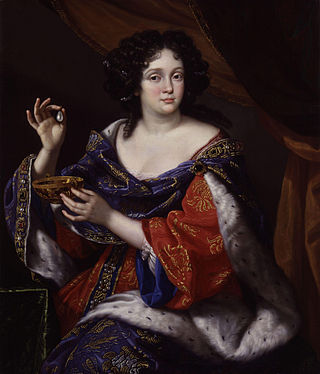
Marie Anne Mancini, Duchess of Bouillon, was an Italian-French aristocrat and cultural patron, the youngest of the five famous Mancini sisters, who along with two of their female Martinozzi cousins, were known at the court of Louis XIV, King of France as the Mazarinettes, because their uncle was the king's chief minister, Cardinal Mazarin. She is known for her involvement in the famous Affair of the Poisons, and as the patron of La Fontaine.

Anna Maria "Marie" Mancini, Princess of Paliano was the third of the five Mancini sisters, nieces to Cardinal Mazarin who were brought to France to marry advantageously. Along with two of their female Martinozzi cousins, the Mancini sisters were known at the court of King Louis XIV of France as the Mazarinettes. Marie is an ancestor of Queen Paola of Belgium.
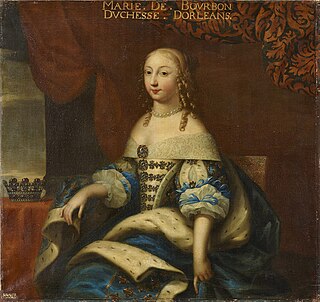
Marie de Bourbon, Duchess of Montpensier, Princess of Dombes and Duchess of Orléans by marriage, was a French noblewoman and one of the last members of the House of Bourbon-Montpensier. Her parents were Henri de Bourbon, Duke of Montpensier and Henriette Catherine de Joyeuse, Duchess of Joyeuse in her own right.

Émile Bougaud, born Edme Louis Victor Bougaud was French, known as a writer and preacher. He became Bishop of Laval.

The Madelonnettes Convent was a Paris convent in the 3rd arrondissement of Paris. It was located in what is now a rectangle between 6 rue des Fontaines du Temple, rue Volta and rue du Vertbois, and part of its site is now occupied by the Lycée Turgot. As the Madelonnettes Prison during the French Revolution, its prisoners included the writers the Marquis de Sade and Nicolas Chamfort, the politician Jean-Baptiste de Machault d'Arnouville and the actor Dazincourt.
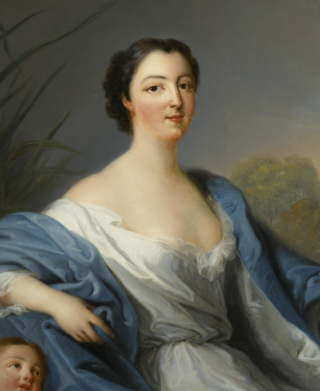
Marie Anne de Bourbon was Surintendante de la Maison de la Reine to the French queen Maria Leszczyńska. She was the daughter of Louis III, Prince of Condé. Her father was the grandson of le Grand Condé and her mother, Louise Françoise de Bourbon, Mademoiselle de Nantes, was the eldest surviving daughter of Louis XIV of France and his maîtresse-en-titre, Madame de Montespan. She was known as Mademoiselle de Clermont.

The Musée dauphinois, located in Grenoble (France), is dedicated to the ethnography, archaeology, history and society of the former province of the Dauphiné. Situated above the neighbourhood of Saint-Laurent in the listed historic monument of Sainte-Marie d’en-Haut, the Musée dauphinois is an accredited “Musée de France“ and takes part in the Long Night of Museums.

The Temple du Marais, sometimes known as the Temple Sainte-Marie, or historically, as the Church of Sainte Marie de la Visitation, is a Protestant church located in the 4th arrondissement of Paris, in the district of Le Marais at 17 Rue Saint-Antoine. It was originally built as a Roman Catholic convent by the Order of the Visitation of Holy Mary, whose sisters were commonly called the Visitandines. The church was closed in the French Revolution and later given to a Protestant congregation which continues its ministry to the present. The closest métro station is Bastille

Jeanne des Anges, also known as Jeanne de Belcier, was a French Ursuline nun in Loudun, France. She became mother superior of the convent at a young age, but is chiefly remembered as a central figure in the case of the possessed of Loudun in 1632, which led, after witch trials, to the burning at the stake of the priest Urbain Grandier two years later.
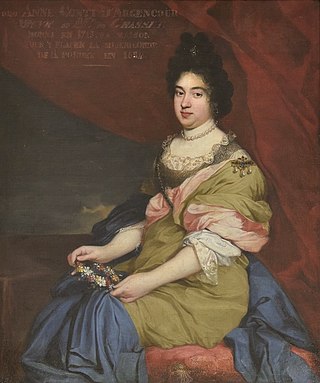
Anne-Madeleine de Conty d'Argencourt (1637–1718), was a maid of honour to Anne of Austria in 1657. She is known for her love affair with Louis XIV in 1658. She fled France in 1679 together with Olympia Mancini after having been implicated in the Affair of the Poisons.
Louis Marie Fouquet, Count of Gisors was a French nobleman and soldier. He was born in Metz, the only child of the Duke of Belle-Isle, a distinguished general, and his second wife Marie Casimire de Béthune. He was awarded the title Count of Gisors. He was admitted to the Knights Hospitaller as a child, but never took his vows because of his age, so allowing him to marry later.
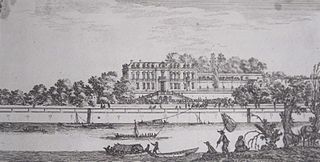
The Château de Chaillot is an ancient château located near the site of the present-day Palais de Chaillot in Paris. It was purchased in 1651 by the nuns of the Visitation de Chaillot and was destroyed in 1794.


















